Top 10 historical sites in Greece you must visit
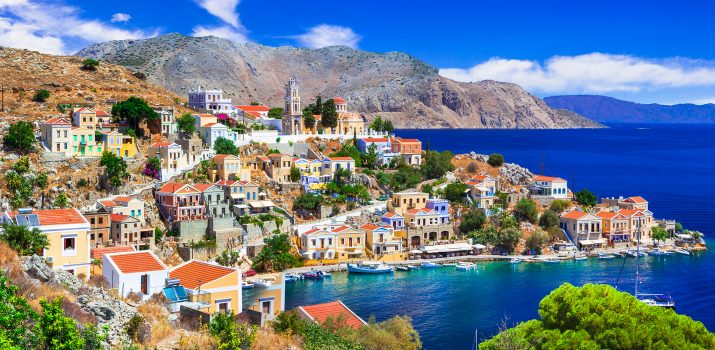
Greece is considered the cradle of western civilisation. Lovers of history will find Greece to be endlessly rewarding. Full of beautiful temples, ruins and statuary commemorating its legacy.
Walk in the footsteps of the great philosophers like Plato and Socrates in Athens. Or watch a drama written by one of the ancient tragedians like Aeschylus in a stunning setting like the ancient theatre in Epidaurus. Ancient history comes alive at the original site of the Olympic Games in Olympia.
Here are 10 of the top historical sites you must visit in Greece:
The Acropolis and Parthenon of Athens
Perched high atop the rocky Acropolis overlooking the city of Athens, the Parthenon is Greece’s most famous historical site. Built during the 5th century BC, the Parthenon was built in honour of Athena, goddess of wisdom and patroness of the city. A gold, ivory, and wood statue of Athena in full armour once adorned the interior of the temple. The Acropolis Museum was built to tell the story of this magnificent archaeological site and preserve and display some of the artwork and statuary found here.
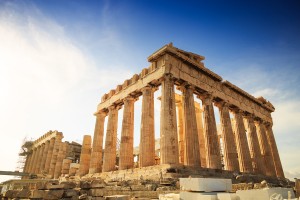
Acropolis Hill, Athens, Greece
The Meteora Monasteries
Rocky sentinels project into the sky in Thessaly in northern Greece. Its name even means “suspended in the air”. Meteora provided a unique sanctuary for monks looking to escape persecution, first settling here between the 13th and 14th centuries AD. The historical site consists of sandstone columns topped by remarkable Byzantine monasteries filled with artwork, frescoes, and paintings. The monks used rope baskets as well as long ladders tied together to scale the heights of their sanctuary home. Today only 6 of the original 24 monasteries are still active.
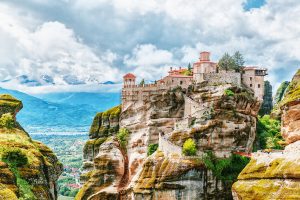
Monastery Meteora against a stunning summer view of mountains and green forest.
The Theatre of Epidaurus
One of Greece’s most historic theatres lies in the Epidaurus hills, southwest of Athens. The Theatre of Epidaurus is one of the architectural glories of ancient Greece. It was built to accommodate 14,000 people in 55 rows of limestone seats. The theatre is renowned for its acoustical properties. Theatregoers in the back rows to can hear the actors on the stage without the use of microphones. The theatre is still used for plays and musical performances during the city’s summer festival.
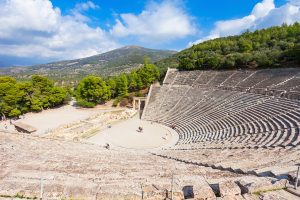
The Epidaurus Ancient Theatre is built on the Cynortion Mountain, near Lygourio
The Ruins of Akrotiri on Santorini
The island of Santorini is one of the world’s most spectacular sites, with its whitewashed villages clinging to the slopes of the volcanic caldera from an ancient eruption. The island was home to a Bronze Age Minoan settlement called Akrotiri. The port town was consumed by volcanic ash in the 17th century BC and so it is sometimes referred to as the Greek Pompeii. Excavations uncovered frescoed buildings, paved streets, pottery, and other artifacts now housed in the local museum in Fira or in Athens.
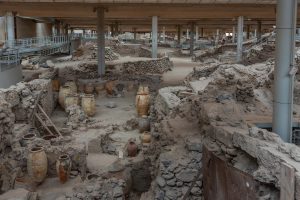
Prehistoric Town of Akrotiri at Santorini island in Greece
The Byzantine City of Mystras
The abandoned medieval town of Mystras is situated on the steep slopes of the Taygetus Mountains in the southeastern Peloponnese. The last Byzantine emperor was crowned here. An imposing fortress sits at the highest point of the city, providing sweeping views. Staircases and arches connect the fortress to seven medieval churches, some decorated with colourful frescoes. Wander the cobblestoned streets of this once proud Byzantine city, peering at the ruins of grand palaces, houses, and monasteries.
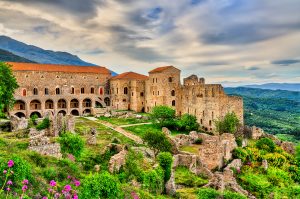
The Despot’s Palace at Mystras, UNESCO world heritage in Greece
The Temples of Delphi
Sitting on the wooded slopes of Mt. Parnassus in the Peloponnesian peninsula is Delphi. It is considered by Greeks to be the geographic centre of the earth. Famed for its oracle that would be consulted for advice, Delphi was the prime place of worship for the god Apollo. City states within Greece erected their own temples and treasuries here. There was also a theatre and a stadium within which races were held during the Pythian Games.
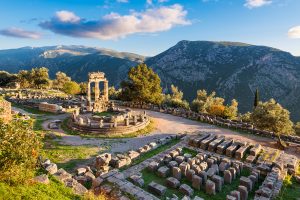
Ruins of the Temple of Athena Pronaia in ancient Delphi, Greece
The Sanctuary and Archaeological Site of Olympia
Olympia is the site of the original Olympic Games, which first occurred in 776 BC. The Games were held in honour of Zeus, king of the gods. The lighting of the Olympic flame today takes place here. Olympia was a sanctuary dedicated to the worship of Zeus. There was once a temple here that contained a 39-foot-tall ivory and gold statue of the god that was considered one of the Seven Wonders of the Ancient World. The archaeological ruins include the ancient baths and temple sites, and the museum houses statuary and artefacts preserved from the excavations.
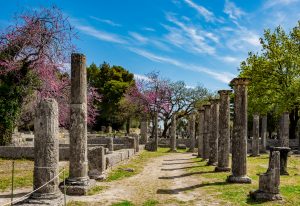
Ancient Oympia, Greece
The Ancient City of Mycenae
One of the most intriguing ancient sites in the Peloponnesian peninsula are the ruins of Mycenae, which gave name to the Mycenean civilisation. This was the home of Agamemnon, who led the Greek forces against Troy in the Trojan War. Its notable architectural features include the famous Lion’s Gate and Palace ruins. Discover the Tholos Tombs, with their unique cylinder-shaped interior, and the remains of the city’s Cyclopean walls, so called because the people thought they must have been built by a race of giants.
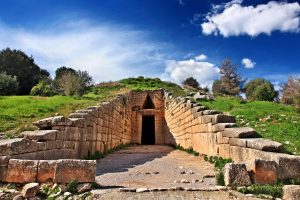
The entrance of the “Tholos tomb of Atreus” in ancient Mycenae
Crete’s Knossos Palace
Located on the island of Crete near Heraklion, the reconstructed Knossos palace will fascinate anyone who loves history and Greek mythology. This was the Palace of King Minos, where the labyrinth from the myth of Theseus and the Minotaur was set. Visitors can see the throne room, the Royal Chambers, the iconic crimson pillars of the Palace’s exterior and beautiful frescoes of the sport of bull jumping as well as a group of dolphins.
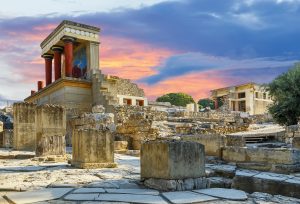
Knossos palace at Crete. The largest Bronze Age archaeological site on Crete and the ceremonial and political centre of the Minoan civilisation and culture.
The Lindos Acropolis on Rhodes
The island of Rhodes has some of the most interesting historic ruins in all of Greece. None more dramatic than the Acropolis of Lindos, perched high above the town. Towering high above the sea, the Acropolis contains ruins of the Temple of Athena Lindia from the 4th century BC as well as a 14th century Castle of the Knights of St John and an ancient theatre. The views are fabulous over the sea and coastline, worth the climb up from the scenic town of Lindos below.
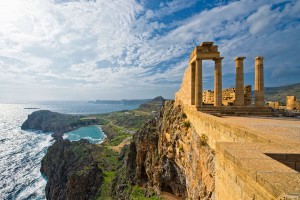
Rhodes, Greece

